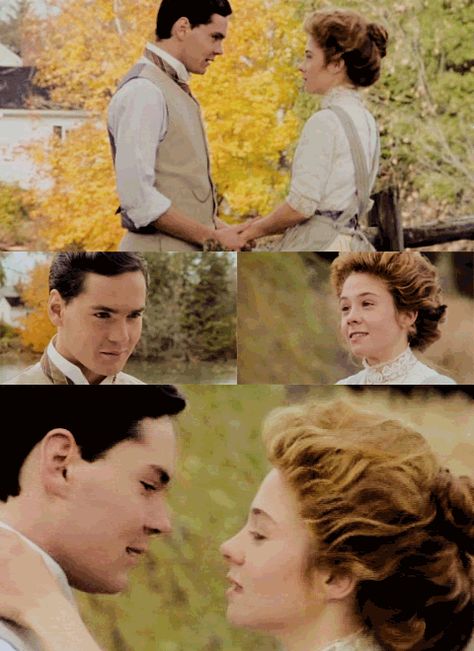
by Sam Juliano
Note: This review is dedicated to the memory of Jonathan Crombie, who passed away earlier this year in New York City at the age of 48 of an unexpected and tragic brain hemorrhage. The beloved actor was, is, and forever will be the world’s only Gilbert Blythe.
I don’t want sunbursts or marble halls. I just want you.
–Anne Shirley to Gilbert Blythe, “Anne of Avonlea”
Mark Twain once described freckled-faced and incorrigible Anne Shirley as fiction’s dearest child since Lewis Carroll’s Alice. While such a glowing contention would be difficult to contest, it might be harder yet to deny she is the most famous character in all of Canadian literature, and that her creator, Lucy Ward Montgomery is often referred to as the “American Mark Twain.” The author’s young heroine was the subject of an eight book series that brought great fame to Montgomery in her lifetime, giving way to translation in twenty-five languages, and bringing sustained scrutiny to the author’s diaries, letters and full body of work. This brought bringing lasting fame to her birthplace, homes and grave site on the extraordinarily beautiful Prince Edward Island, a tiny province of Canada off the shore of Nova Scotia that now owes much of its prominence to Montgomery and her venerated Anne. Tourism is a one of the island’s most lucrative assets, and for decades a “Green Gables Tour” has been a godsend for fans of her novels. Canadian tourism officials report that in excess of 125,000 visitors a year descend on the paradise hamlet to behold the literary landmarks and partake in the related festivities. It could well be argued that Prince Edward Island can’t be even contemplated without a thought for Anne and the author who best extrapolated on the place’s special and incomparable allure. To this end there can be no doubt that the mid-80’s television adaptations have taken the franchise to places never seen before.
Though the beloved first book in the series – Anne of Green Gables – was made into a successful RKO film in 1934, its extremely short length didn’t give opportunity for a well-rounded look at Anne, nor at the many narrative and character complexities in the novel. Some stage plays followed, but not until Kevin Sullivan acquired the rights in 1984 did the book receive the kind of treatment that not only exhibited fidelity to its source but brought an exceeding level of warmth and humanity that has continued to hold thrall with viewers around the world. Sullivan’s battles in court to defend his acquisition of the rights and the lawsuits connected to them have reached all the way to the shores of Japan, where ironically the most passionate Anne of Green Gables fans reside. Sullivan took full advantage of the loveliest of rural settings, filming on the island and assembling a dream cast that to this day represents a rare chemistry that is achieved through luck, timing and talent. Sullivan co-wrote the script for Green Gables with Joe Wiesenfeld and handled the direction, and for all the film’s exemplary components it remains the key ingredient in the work’s enduring appeal. When the great success of the 200 minute film was assured -Sullivan moved forward on a sequel, which is titled Anne of Avonlea, and as written and adapted solely by him based on three books in the series – Anne of Avonlea (Book Two); Anne of the Island (Book Three) and Anne of Windy Poplars (Book Four) it represented a unique hybrid. Again the writing was exceptional, and the addition of several characters and sub-plots were woven in successfully. Avonlea also featured a hefty running time at 230 minutes, though as fans and critics have glowingly attested it remained engrossing throughout. Following up on the heels of its revered predecessor, Avonlea in short order became the highest rated drama to air on network television in Canadian broadcasting history. It spawned a spectacularly successful television series Road to Avonlea, which was activated by some of Montgomery’s short stories and novellas. At 93 episodes it remains the longest running, most popular and lucrative drama series ever produced in Canada. A third film, Anne of Green Gables: The Continuing Story arrived in 2000, though to weak reception. But the first two films, which are the subject of this review, will be considered as a single work, though with the dividing specifications. Together they comprise what is arguably the most magnificent television work based on fiction ever produced in the western hemisphere. Sullivan later added an animated Anne of Green Gables, which was fairly well-received, and then a fourth film a few years back that was lesser regarded. (more…)
Read Full Post »
































 Click on names for archives
Writers/Founders
Click on names for archives
Writers/Founders